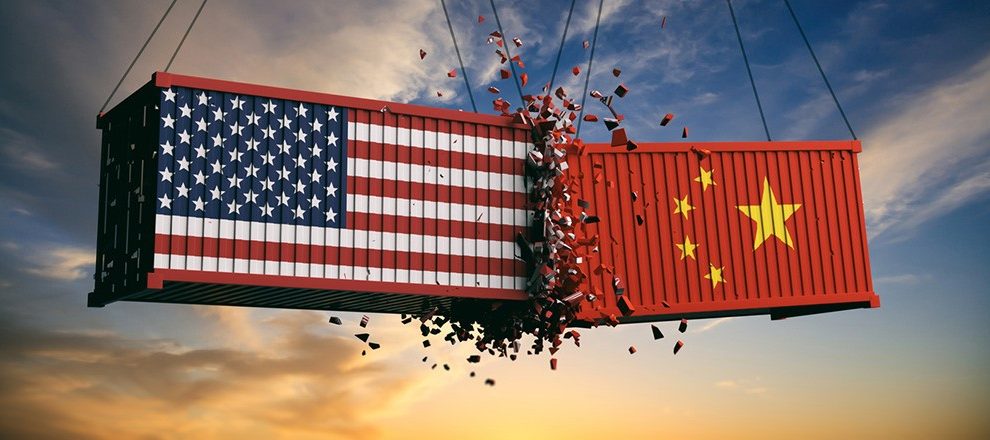The US – China relations are usually described as the most defining force to shape the global security architecture for upcoming decades. They have gone through tremendous transformations in recent 45 years. The opening to China launched by Nixon Administration was a part of the US strategy to deter and contain the Soviet Union. Since late 1980s the US have accelerated its economic relations with China creating a heavy interdependence. According to American strategic thinkers the idea behind this strategy was the firm belief that growing level of life standards in China, creation and rapid expansion of middle class will inevitably bring about political changes. According to that theory, the Chinese middle class inevitably will demand more political freedoms and the functioning multi party system. Gradually Chinese leaders will be forced to implement sweeping political reforms which will transform China into the some sort of liberal democracy.
Besides these strategic geopolitical calculations the rapidly expanding globalization also fostered US – China economic cooperation. China was transformed into the production hub for many American companies which were receiving huge economic gains due to the cheap Chinese labor force. Simultaneously, starting in 2000s China has become one of the key holders of the US debt, buying in large quantities the US Treasury bonds and bills. The main idea behind this move was to support export driven China economy growth given the fact that the US is the top market for Chinese products. Chinese loans to the U.S., through the purchase of U.S. debt enable the U.S. to buy Chinese goods. It was a win-win situation for both nations, with both benefiting mutually. China got a huge market for its products and the U.S. benefits from the economical prices of Chinese goods. As of May 2019, China owns $1.11 trillion, or about 5%, of the $22 trillion U.S. national debt, which is more than any other foreign country.
However, the geopolitical calculations of the US did not materialize. The establishment and rapid growth of the middle class in China did not resulted in US desired political reforms and did not transform China into the Western style liberal democracy. We may argue that one of the key reasons was the fate of the Soviet Union. The USSR launched rapid political reforms in mid 1980s which quickly resulted in the collapse of the Soviet Union with huge decrease of social – economic standards and multiple ethnic and religions conflicts. Quite understandably, Chinese leadership did not want to repeat Soviet Union fate.
Simultaneously, rapid economic growth of China inevitably has resulted in increase of Chinese political and military might. If we do not take into account strategic nuclear arsenal, Chinese military now is the second strongest in the world. In recent years China has launched ambitious military modernization campaign creating forces capable of global power projection. In economic terms China GDP based on purchasing power parity surpassed the US in 2014. According to International Monetary Fund 2019 estimates China’s GDP based on PPP is more than 27 trillion USD, while the US is only 21.5 trillion USD. Some economists anticipate that China nominal GDP will surpass US in or around 2035.
The growing Chinese economic and military might has created concerns among US political leadership. The Chinese official position is clear – China does not and will not seek hegemony, neither in the Asia Pacific nor in the global level, will never interfere in other countries domestic affairs and will never try to force its own government system on others. This message once more reiterated by the Chinese Minister of Defense General Wei Fenghe during his key note speech at the 9th Beijing – Xiangshan Forum on October 21, 2019. However, the US political establishment does not incline to accept these assurances as for granted. Since the beginning of the President Obama second term the US was putting more and more attention to Asia Pacific. The harbinger for the “Pivot to Asia” policy was the then secretary of state Hillary Clinton paper “America’s Pacific Century” published in Foreign Policy Magazine in October 2011. The Obama administration launched redeployment of American military assets to Asia Pacific. Another signature initiative of the US was the Trans Pacific Partnership, a trade agreement between 12 Asia Pacific nations notably excluding China, which was signed in February 2016 but never take effect due to the President Trump decision to withdraw US signature at the beginning of 2017.
Thus, even before President Trump administration, the US was concerned regarding China’s growing influence and was making steps to contain it. However, the bilateral relations reached the lowest point in 2018, when President Trump launched its Trade War against China. It was the combination of several factors which brought US – China rivalry to the new height. The President Trump is mainly supported by those Americans who did not get any benefits from globalization and who lost their jobs as a result of redeployment of manufacturing powerhouses to China and other Asian countries. These circles in the US are angry against globalization and against China. Thus, by fighting hard against China President Trump is seeking to boost its domestic popularity ahead of the 2020 Presidential elections. However, the key reason behind current confrontation is not the personality of President Trump. We may argue that China containment policy is one of the few areas when current US administration shows continuity.
So what are the key accusations levered against China by the US. Americans are arguing that they are concerned not by the fact of China’s growth, but by the way of that process. They accuse China of massive intellectual property theft and forced technology transfers, arguing that almost all Chinese achievements in modern technologies including 5G networks, artificial intelligence and even the launch of the narrow body aircraft C919 are the results of Chinese malign activities. Simultaneously, they argue that China has the hidden agenda of exporting its state model into the region and establish a regional and in the distant future even global hegemony. Thus, from American perspective the only way of normalization of relations is the significant change of Chinese economic and foreign policy. The US – China trade war is only a one aspect of bilateral competition and even if some trade deal is signed, relations will be confrontational until China makes significant changes.
Chinese experts are rejecting these accusations arguing that US should accept the fact that the time of the US global hegemony has passed away. The future of the international security architecture is multi polar system, where US is a significant but not omnipotent player. US should abandon its vision of being a ‘God chosen state” with mission to disseminate its own model of governance all over the world and should accept that different models of developments and state systems should have equal rights of existence.
The one thing where American and Chinese opinions coincide is the clear understanding that competitive bilateral relations are here to stay for coming decades, and the best case scenario is the continuation of current 70 percent competitive 30 percent cooperative relations, while worst case scenario may even entail the direct military clash over Taiwan.
How the US – China rivalry may impact the Russia and the Post – Soviet space. In recent years we are witness of launch of the Russia – China strategic comprehensive partnership. The Russian decision in 2015-2016 to start selling to China the most advanced weaponry, which Russia was reluctant to do previously is the key indicator that currently Russia does not view China as a possible adversary for at least upcoming 15-20 years. The recent Russian decision to assist China in establishing the early warning system for detecting missile launches is another proof of the strategic partnership between the two states. The timing of transformation in Russia’s approach towards China coincided with the sharp deterioration of the Russia – West relations due to the Ukraine crisis. Russia and China have common interests in countering the US and boosting multi polar security architecture. The US leadership, on its turn, views with concern the current Russia – China rapprochement. Given its strategic rivalry with China, the last thing US wants is the Russia – China alliance. Obviously, the US can not make Russia to be an enemy of China, but it may prevent the strategic partnership transformation into the strategic alliance.
Meanwhile, the only way to pull back Russia from becoming to close to China is the gradual improvement of the Russia – West relations. However, to be able to launch this process the US, in some extent EU and Russia should come into terms in defining the former Soviet space security architecture. In this regard it is not surprising that key American think tanks such as RAND in its October 2019 publication “A Consensus Proposal for a Revised Regional Order in Post-Soviet Europe and Eurasia” and prominent experts, such as Thomas Graham in his latest paper for Foreign Affairs Magazine November – December 2019 issue “Let Russia be Russia” are calling Russia and the West to find a mutually acceptable solutions for the Post Soviet space. Most probably, the US will be ready to decrease its involvement in the region and accept the growth of Russian influence there asking Kremlin in return to at least slow the pace of its partnership with China and be more active in countering China in the Central Asia. US – Russia understanding may be based on final rejection of even theoretical possibility of NATO or EU further enlargement in Post Soviet space and establishment of some sort of buffer zone comprised of Ukraine, Moldova, Azerbaijan and Georgia. Another part of possible bargain could be the abandonment of any efforts to pull Armenia and Belarus out from Russian orbit.
Thus, Eastern Partnership member states should carefully calculate their strategic choices in short/mid term perspective. Most probably the hopes that West will support these states to implement necessary reforms and counter Russian influence just because they are declaring themselves as defenders of liberal democratic values and champions and bacons of democracy may prove fruitless. In case of continuing tough anti-Russia policy these states simply could be just left alone to face growing Russian resentment with unpredictable consequences especially for those facing permanent threat of war and even physical extermination.

Dr. Benyamin Poghosyan, Chairman and Founder, Center for Political and Economic Strategic Studies





